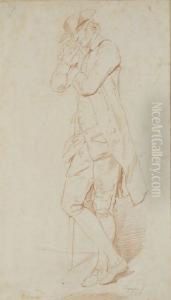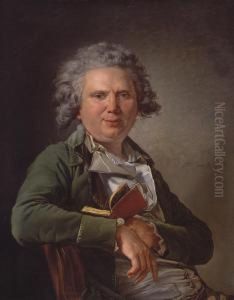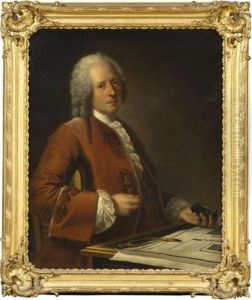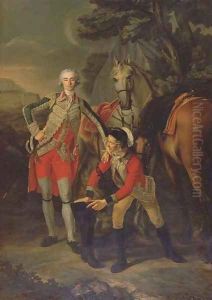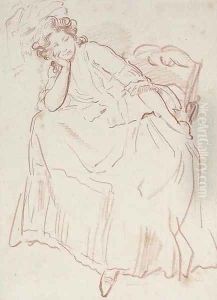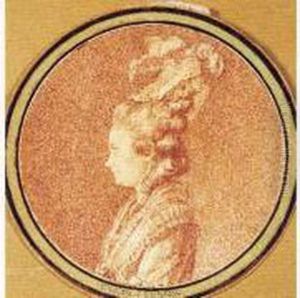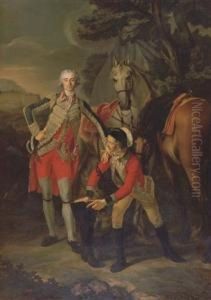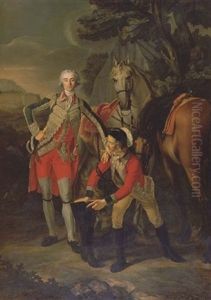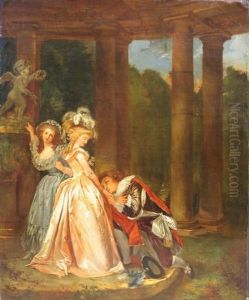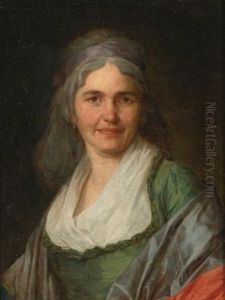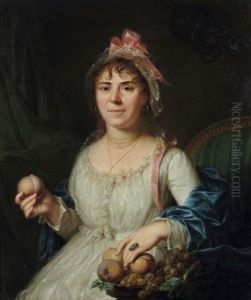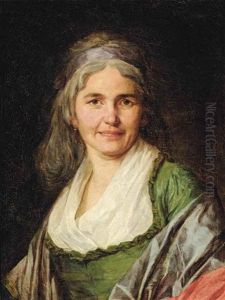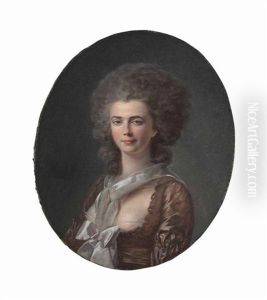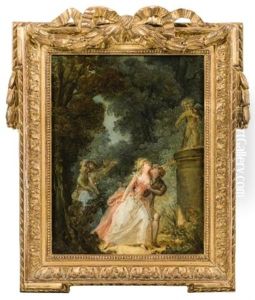Louis Rolland Trinquesse Paintings
Louis Rolland Trinquesse was an 18th-century French painter whose work is often associated with the Rococo style, characterized by its lightness, grace, and decorative charm. Trinquesse was born around 1746, though the exact date and place of his birth remain uncertain. What is known is that he became active in the Parisian art scene and was recognized for his skill in depicting elegant interior scenes, portraits, and genre paintings that often captured intimate moments of the French elite.
Trinquesse's artwork was particularly noted for its delicate portrayal of fabrics and the sophisticated attire of his subjects, reflecting the fashions and social mores of the time. He exhibited at the prestigious Salon de Paris, where artists showcased their work to potential patrons and critics. His paintings were well-received, and he gained a reputation for his refined approach to composition and his ability to render figures in a naturalistic yet graceful manner.
Despite his success, there are few records of Trinquesse's life, and much of his personal history is shrouded in mystery. He was a contemporary of more famous artists like François Boucher and Jean-Honoré Fragonard, and although he never reached the same level of fame, his works are considered valuable for their contribution to the understanding of French Rococo art and culture.
Trinquesse's career was cut short by his untimely death in 1800. However, his legacy endures through his paintings, which continue to be appreciated for their beauty and historical significance. Today, his works can be found in various art collections and museums, offering a glimpse into the opulent and sophisticated world of 18th-century France.


